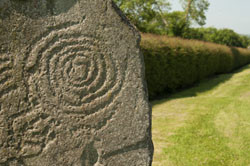Studying European Neolithic rock art
Painted tombs in Neolithic western Europe decorated with engraved and painted art have prompted archaeologists to wonder about the connection between art and death. Research on such art has dipped since the 1960s, which has resulted in many unanswered questions. A comprehensive study on how art was created and used in the Neolithic tombs of Sardinia was the scope of the EU-funded ADINE (Art and death in Neolithic Europe) project. Sardinia has the largest group of decorated tombs in Europe, but they are also the least studied. Work began with documenting unpublished decorative tombs using both standard and innovative photographic techniques. Spatial organisation of art inside tombs and the regional distribution of decorated tombs was analysed using statistics and geographic information systems. Also examined were the similar forms of tomb art and their use in ritually and socially traditional societies in South-East Asia and East Africa. Sardinian art was placed in its larger historical context within the major tomb art traditions of Neolithic and western Europe. Additionally, a new form of recording was developed for rock art sites using various methods. The work will help maintain Europe's agenda in rock art research and theoretical archaeology. Its impact can extend to the worldwide public interested in rock art as well as organisations responsible for cultural heritage development.







